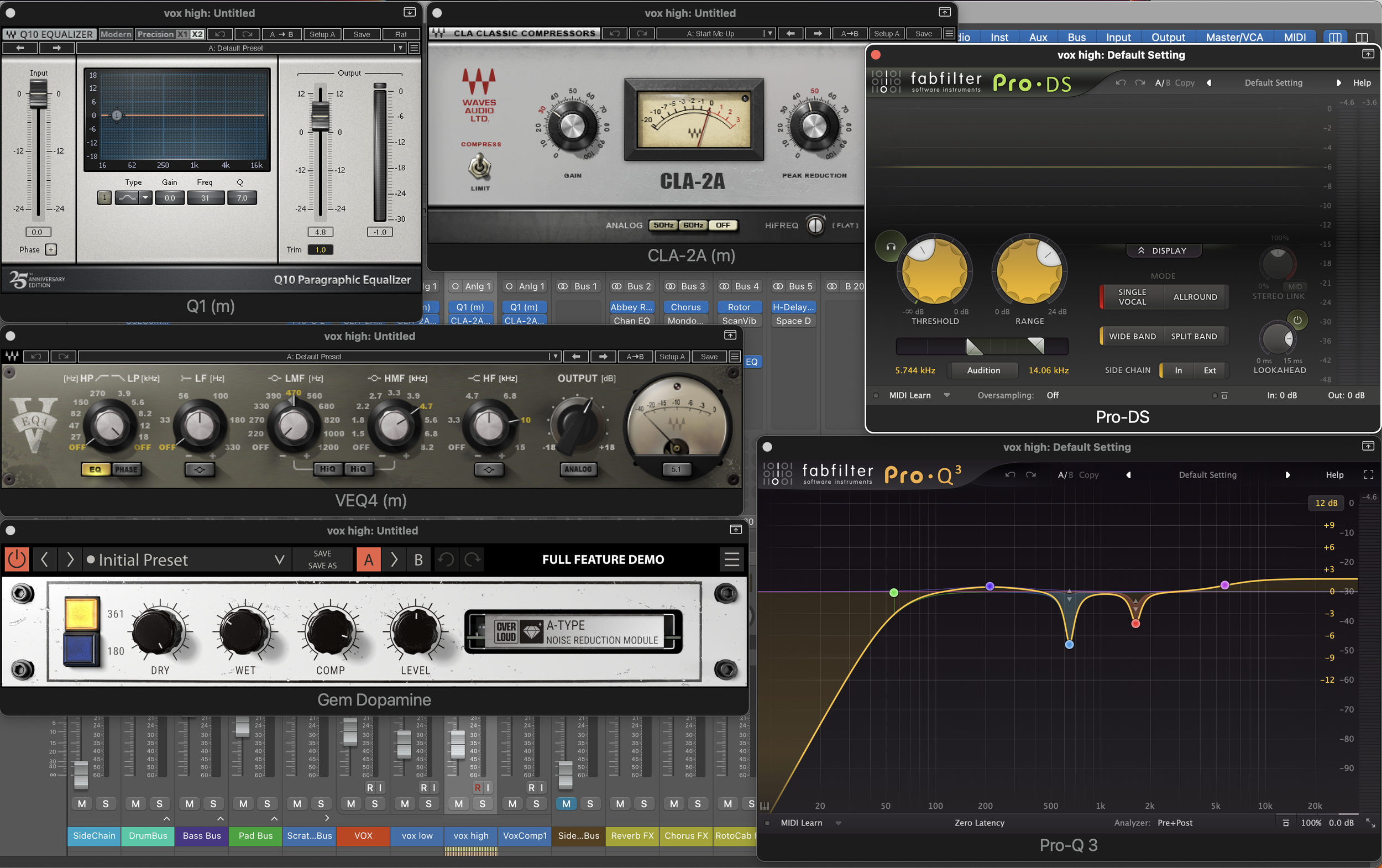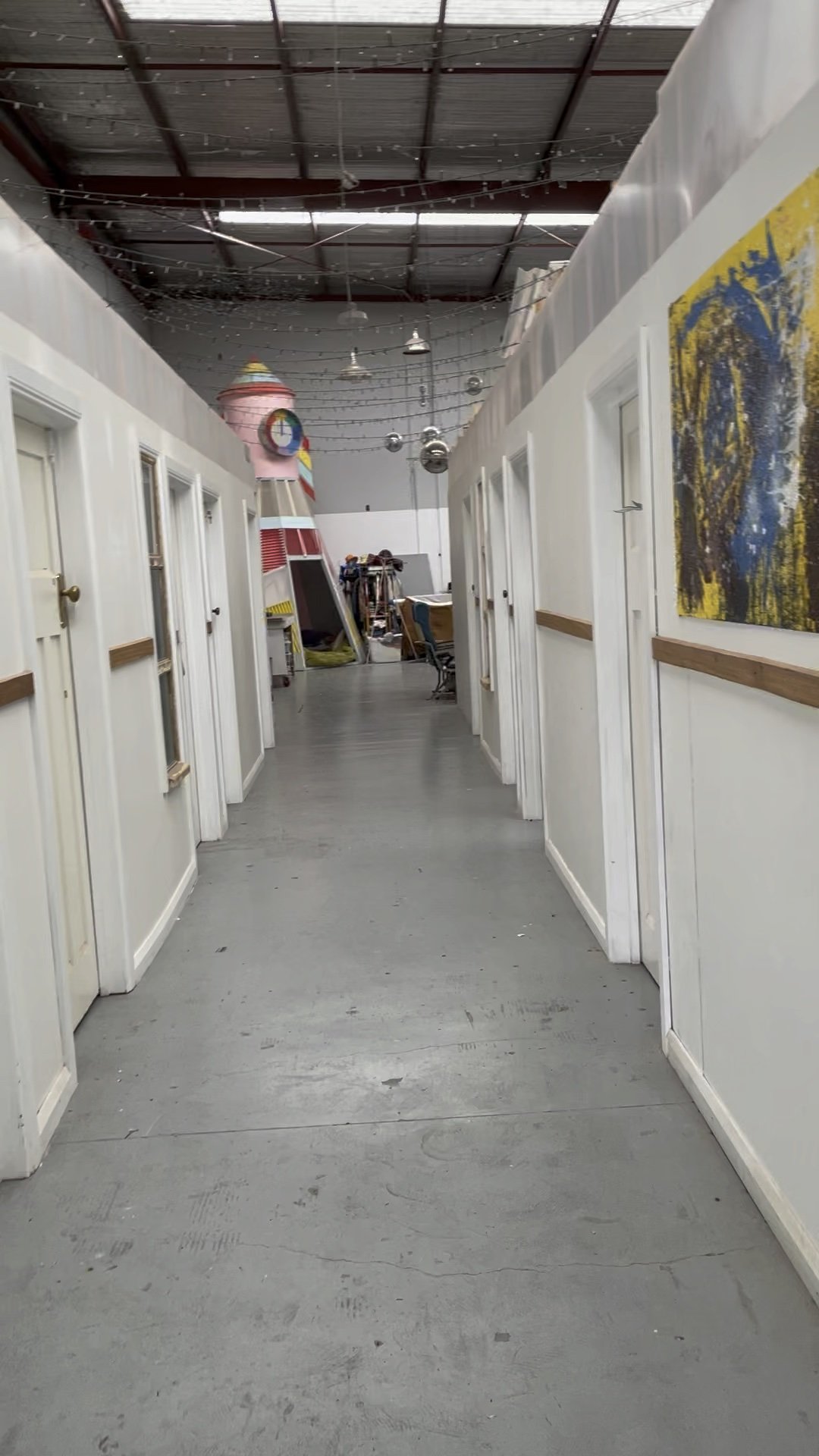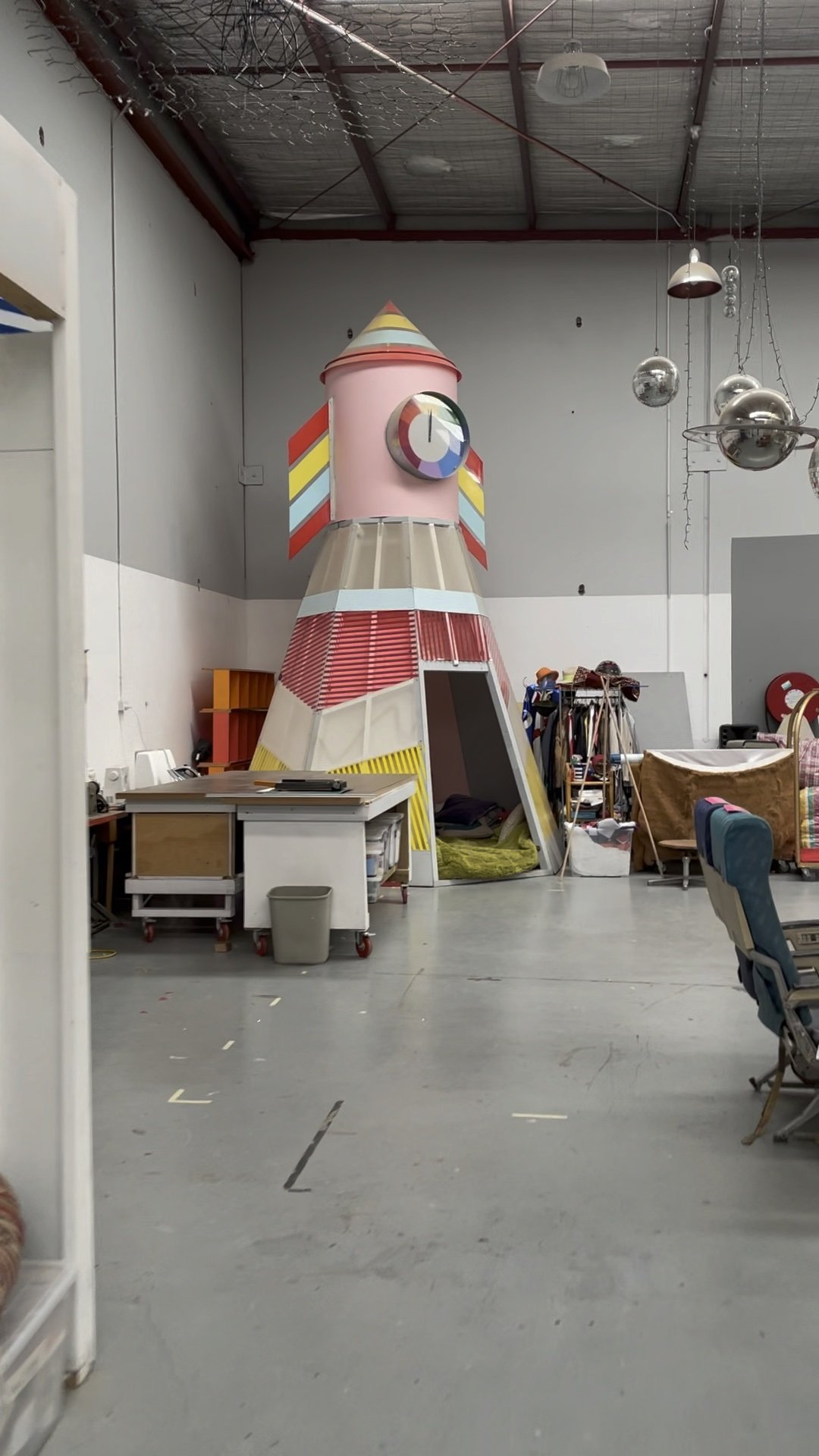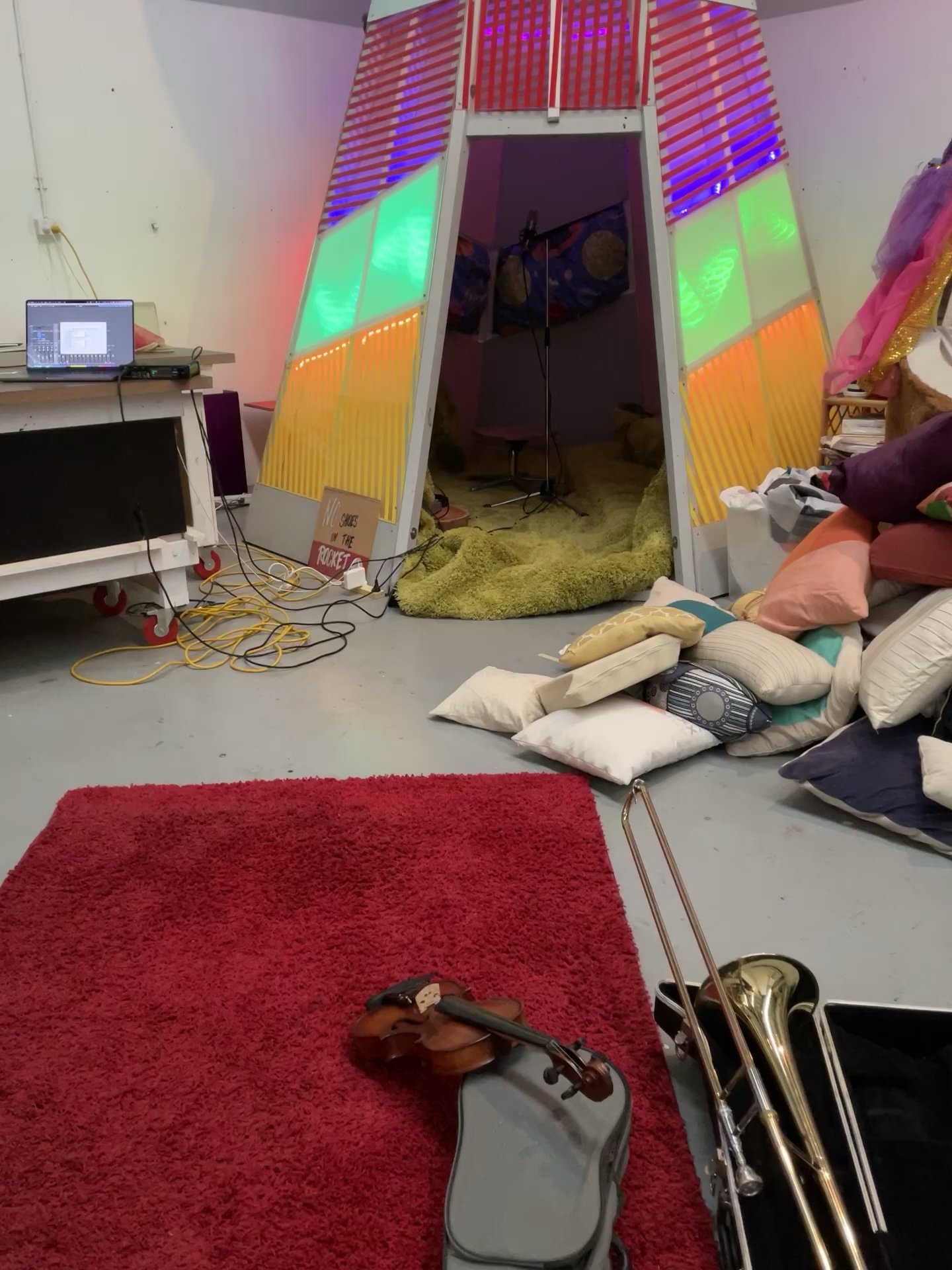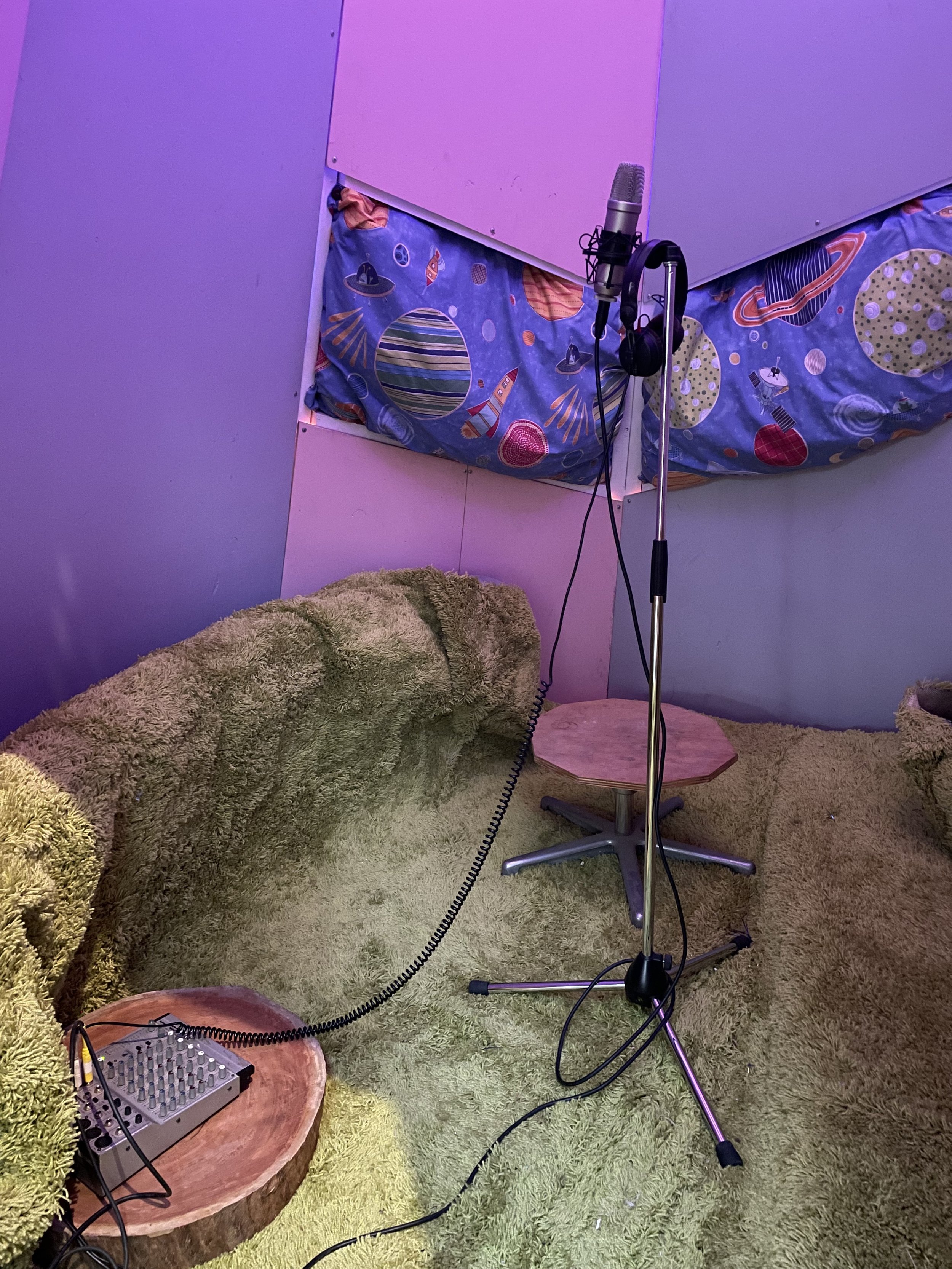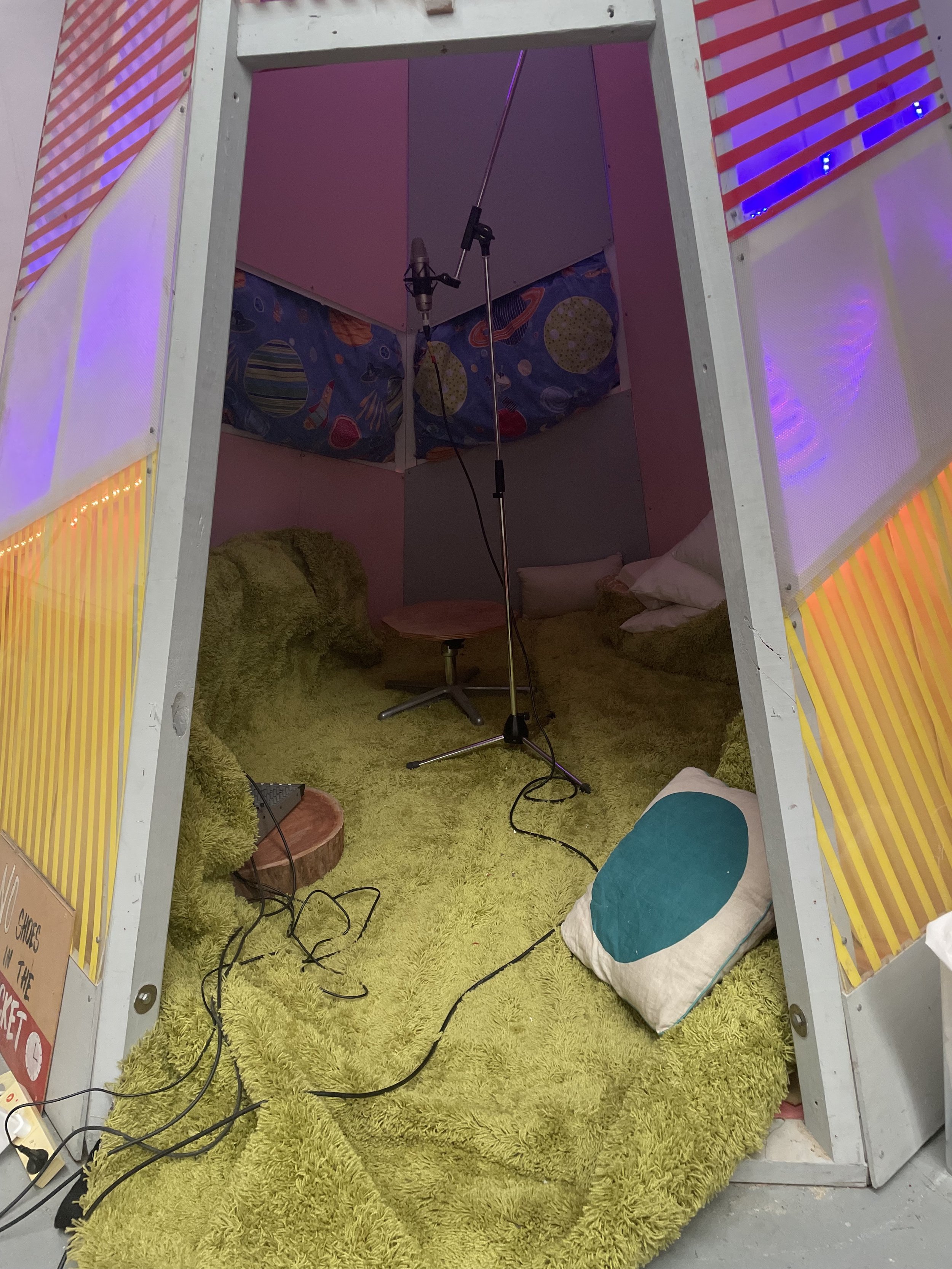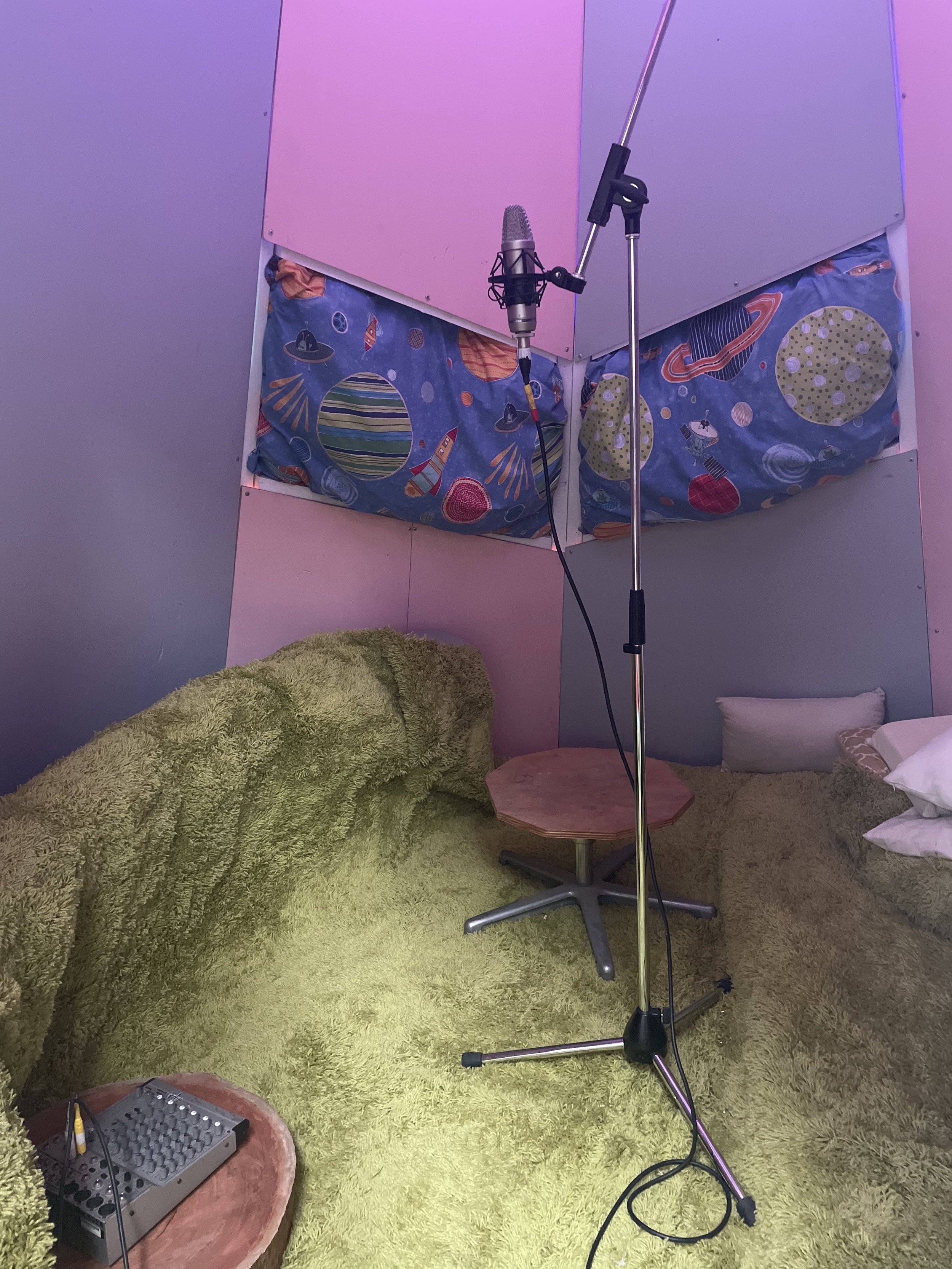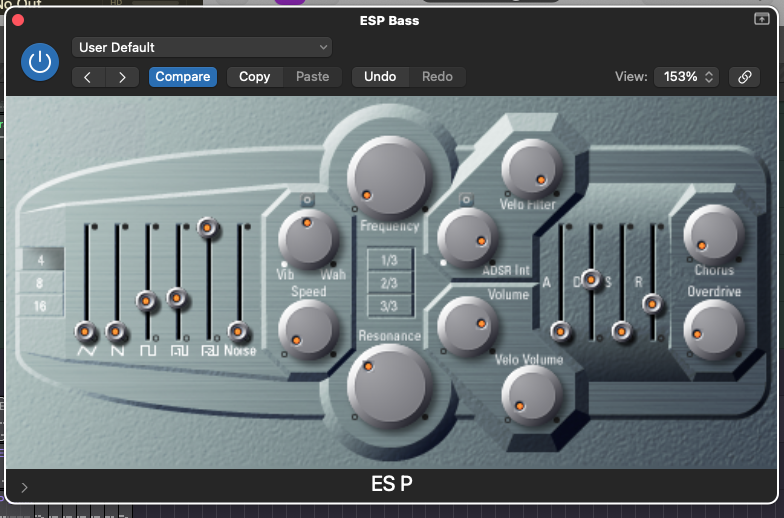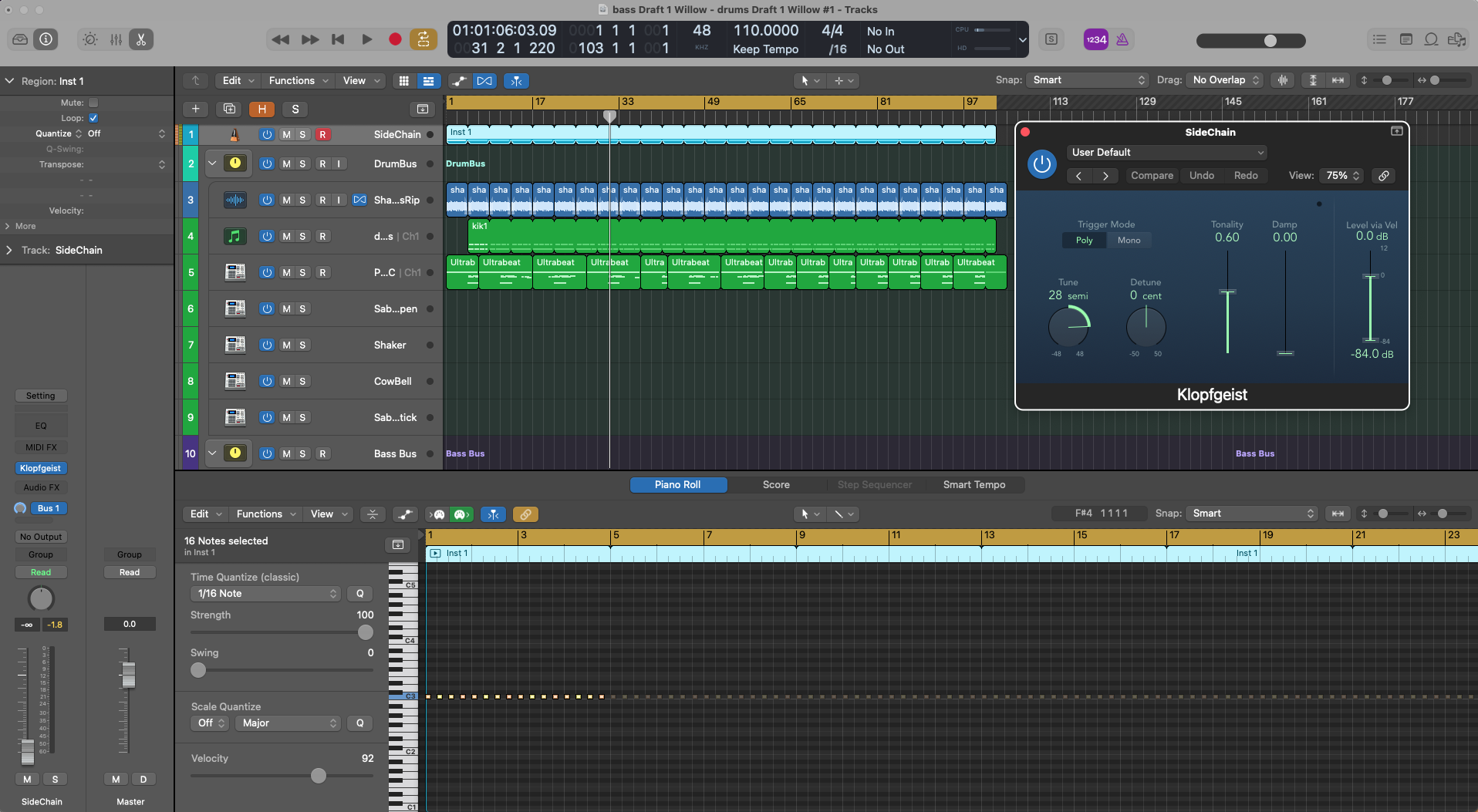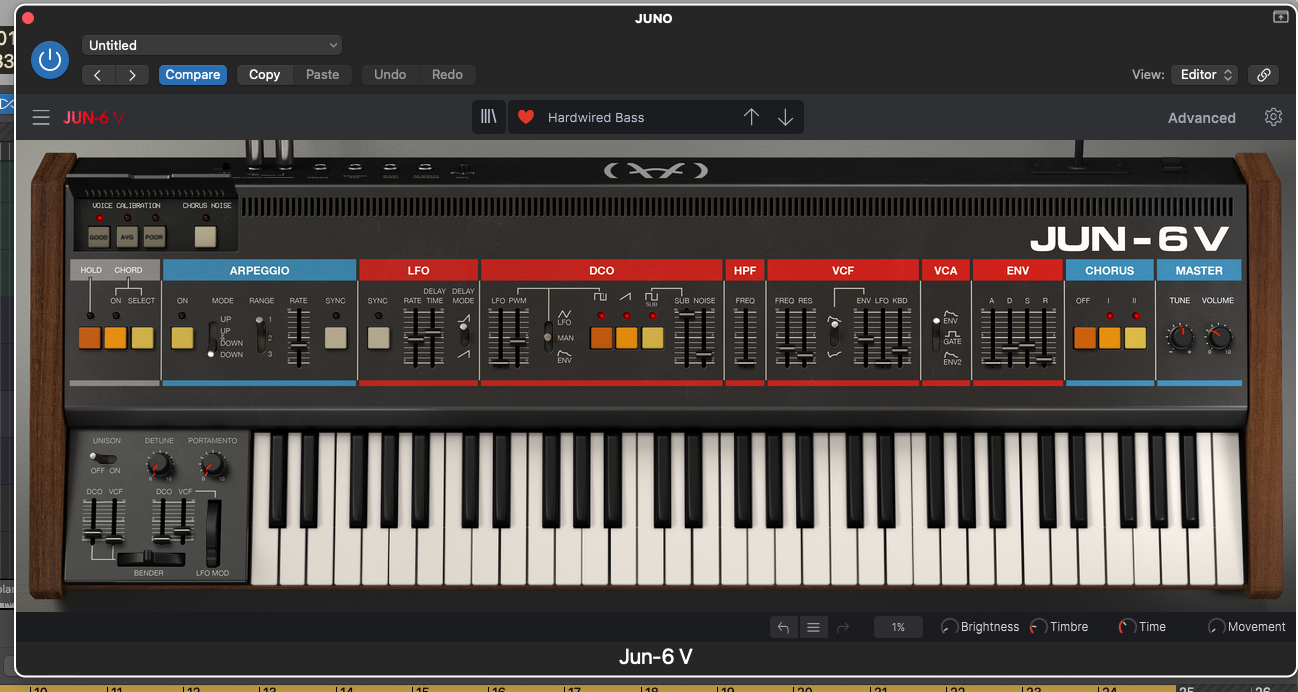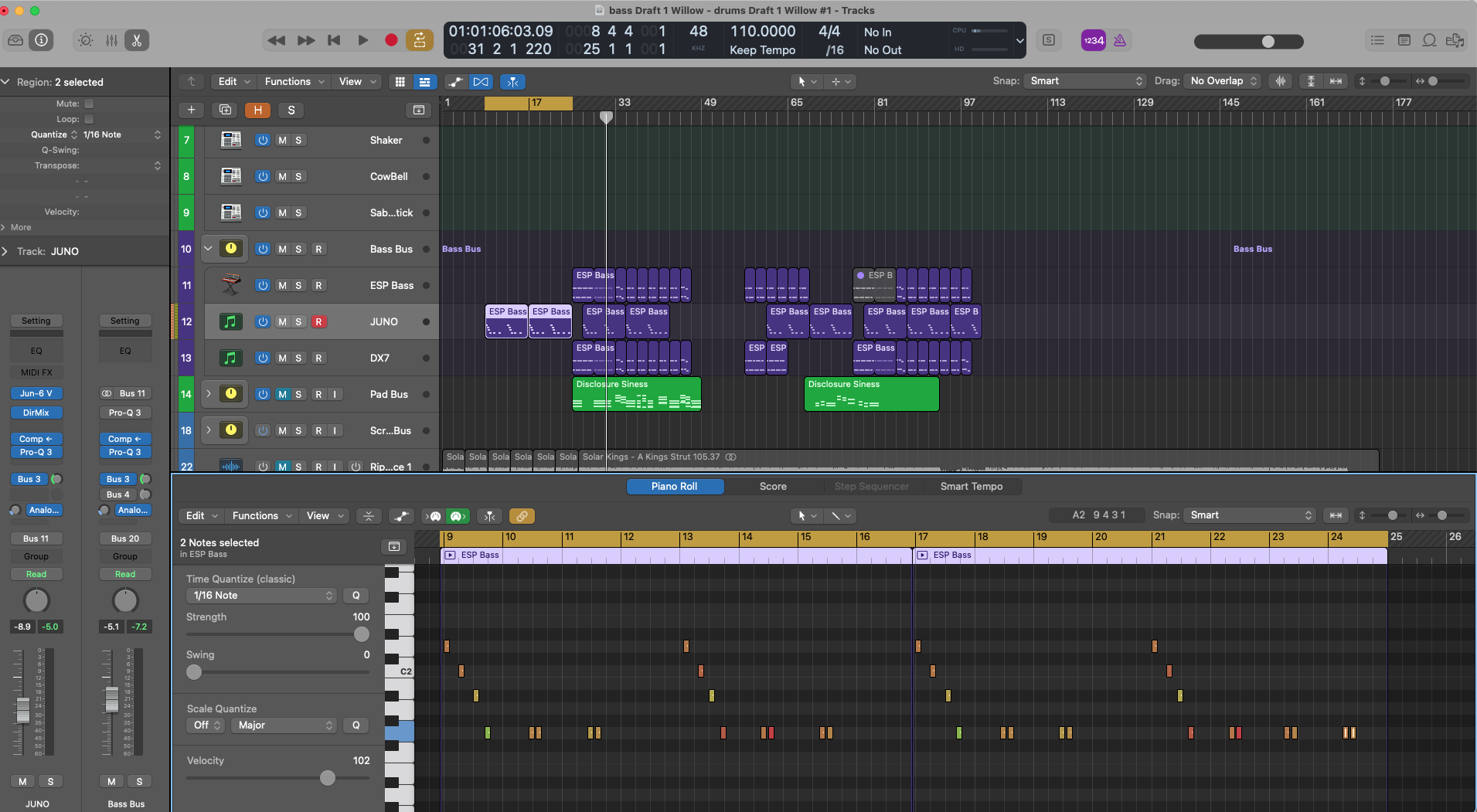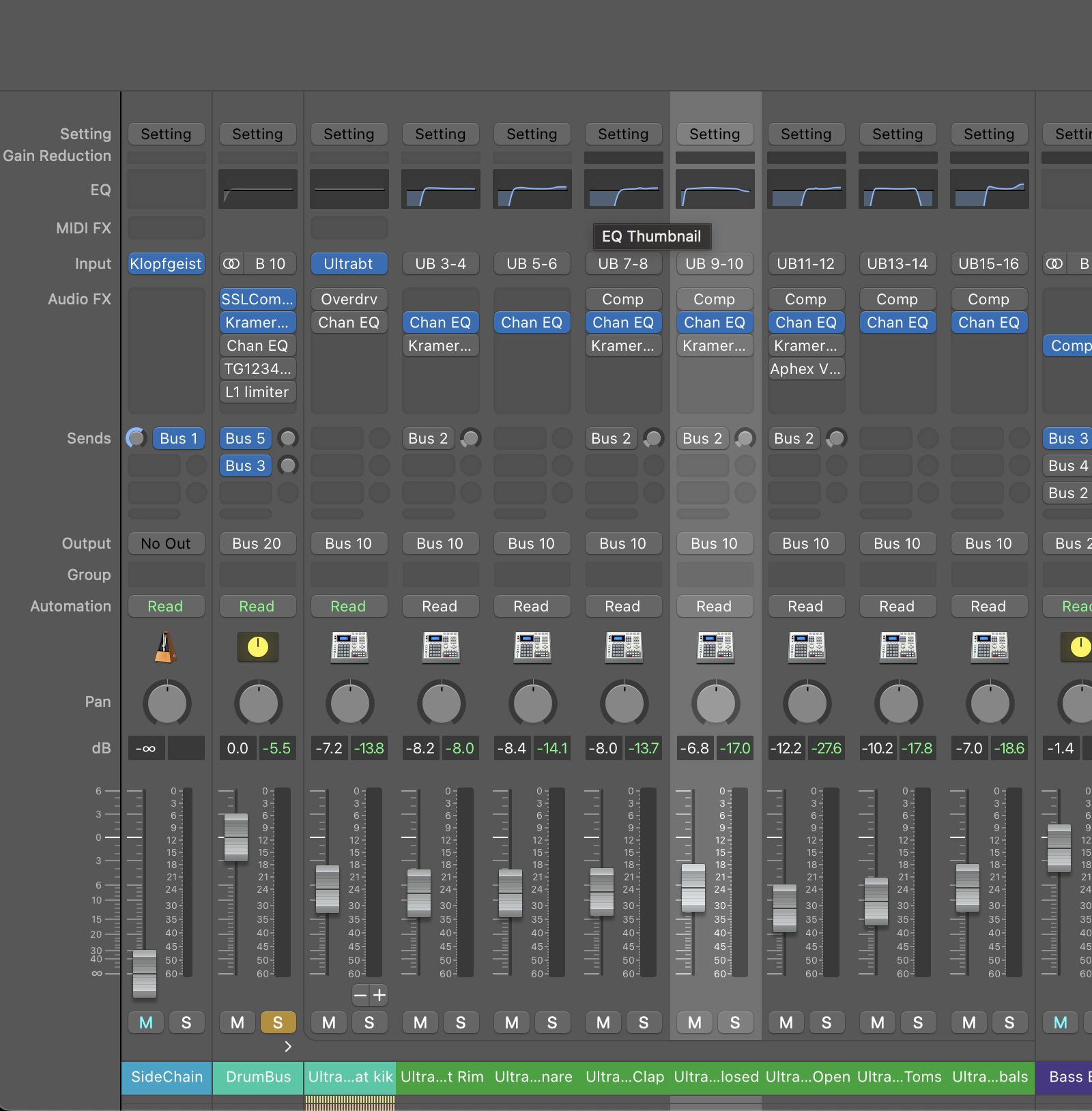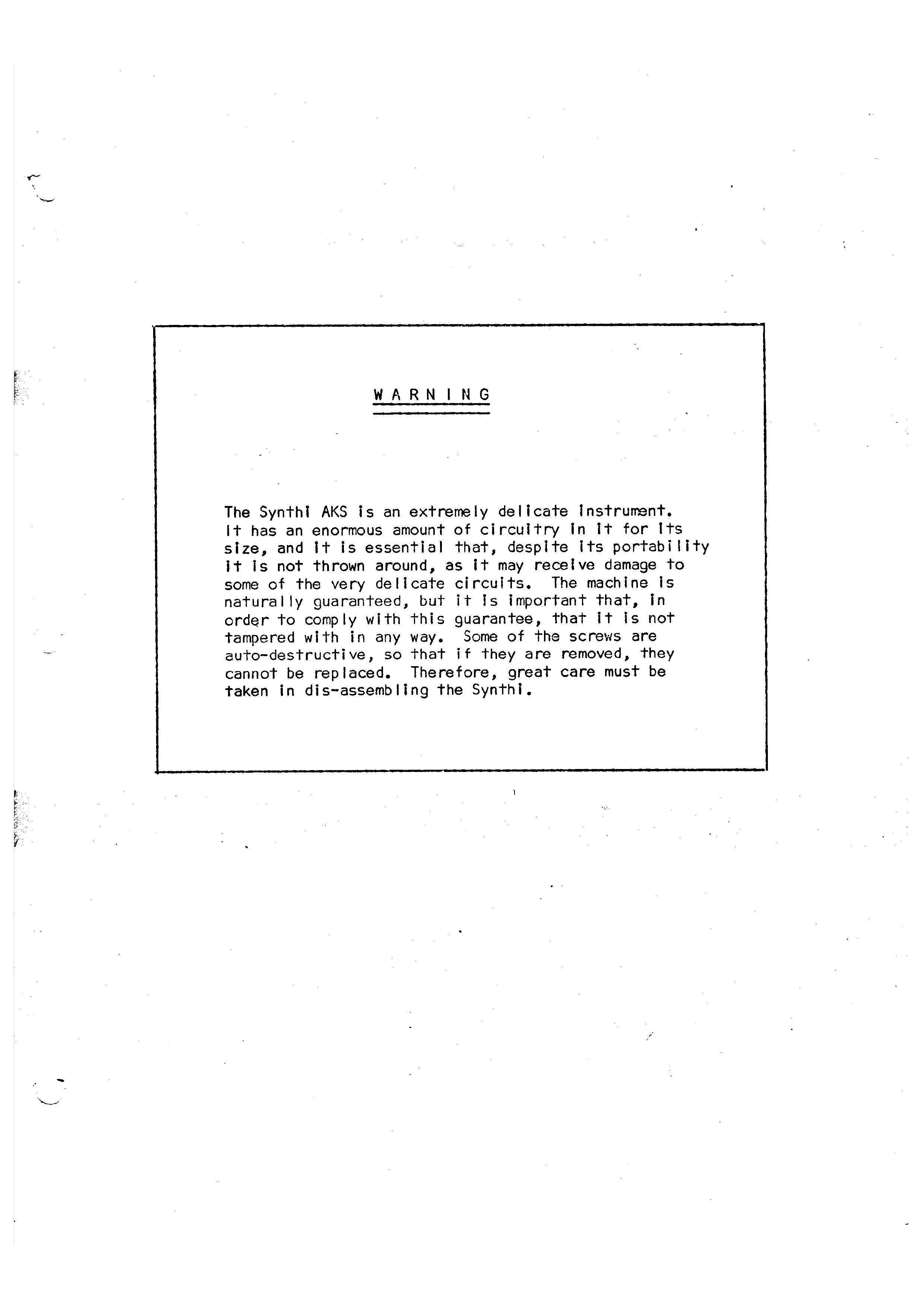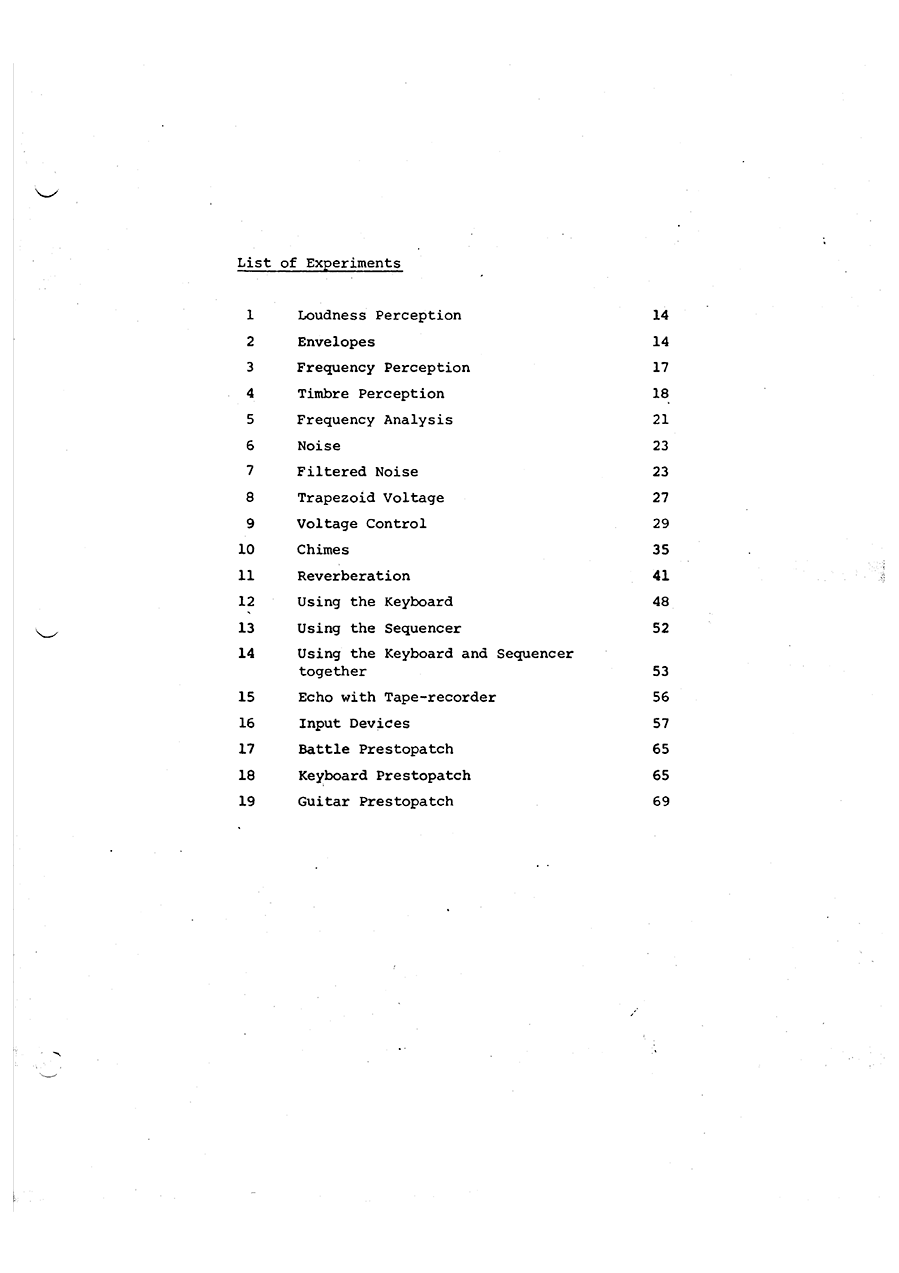Laptop Recording Studio Logbook
EJECT:STOP:PLAY:REC:F.FWD
28-05-22
Mix & master
I began this final blog before getting sick with COVID. I had done quite a few mixes and one master. Trying to get the track finished was becoming difficult as apart from being ill I don’t think I was hearing all that well. Having a week extension and break from it all gave me a fantastic opportunity to rest my ears and get some distance from the track. Coming in again with fresh ears was great… but also made me think I needed to start all over again!
I did go back into the mix and made a few changes before bouncing the final mix and doing a master over the stereo file.
This has been a wonderful course, I am really pleased to have had the opportunity to get back into my music on a regular schedule. The class exercises and lecture material has been wonderful. A chance to refresh my skills and learn some new ones. The biggest most important for me has been the critical listening. I have been able to fine tune my ears and increase my mixing abilities.
After time away from my earlier final mixes I wanted to try softening the slight vocal harshness also to get some more interest and movement in the last section of the song.
I spent a lot of time and tried many alternative mixes. This turned out to be not very beneficial as many times I fee I went too far from the original and actually mad it worse. I finally settled on using Soothe and Brauer Motion on the vocal buss.
Soothe was taking out the harsh resonant frequencies and adding sone very slight compression, it seems to make sounds softer, and warmer. The Brauer Motion I used in the harmonies section and the last vocal sections for a slight touch of movement within the stereo field.
The mixing process reminded me that sometimes having a digital non-destructive workflow can be a curse. Having the ability to go forward and back in time with creative decisions can be debilitating.
There is a lot to be said for the old days of destructive editing with cutting and splicing tape! Once the tape is printed or cut you are committed to that decision, I have found that at times this can be creatively freeing than an unending edit history.
Vocal buss Soothe and Brauer Motion plugin
After finally settling on a mix I proceeded to the mastering stage.
My final mix output levels were hitting 0 on the VU meters calibrated to -11, with the eldest short term hitting at 1-2dB above (-10/9dB).
I brought the stereo file into a new Logic session with my mastering plugin ins on the channel.
I use a simple gain, EQ, compression and limiting.
The EQ I used to take a few dB off some resonant frequencies and to boost gently some of the missing warmth.
The compression I initially tried using the multi-band, however I felt it was allowing me to change to mix too much.
I used the single band instead, this took a lot of excess harsh punch out of the transients that were peaking through, at about -6dB.
Finally the limiter is then attenuating the peaks.
The final master sounds warmer and ready for steaming.
Executive Summary
Since the early 1990’s I have been a DJ, listening and playing to house music. I have also spent the past 15 years building my skills as a sound artist.
Within this course I have applied my previous knowledge of dance music, recording, composing, and mixing within Logic Pro to create a short dance track.
Each week I have worked through the lesson and practice materials and then applied the learnt and revised skills to creating my track. I have recoded my progress in a series of 12 weekly bogs on my website.
From week to week my track has grown and changed from its initial inspiration to work with a particular vocalist (alto Willow Sizer) to incorporate slo-house dance elements. My selection of the RODE NT-1A for vocals along with my unusual vocal booth offered an expansion of my skills. It also provided a great learning experience of being better prepared for a vocalist session as I did not manage to get harmonies. Problem solving this omission provided the opportunity to be creative within the composition, however I the actual recordings would have worked much better. After feedback from my draft I focused on the repetitive dominate elements and worked on the EQ and dynamics of the low end sections. One of the most important learnings I have had from this experience is to constantly refer to my reference tracks. I don’t think I did this enough during the first half of the project. The final process of mixing and mastering again reminded me of how much I have learnt through this project and how much more I have to learn. Together with lifelong learning comes constant practice of the skills learnt. I have certainly begun this process with this project.




















